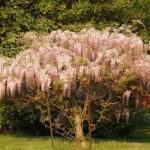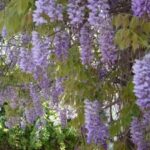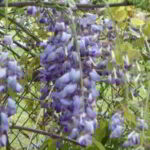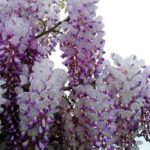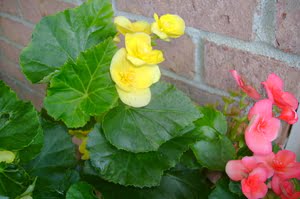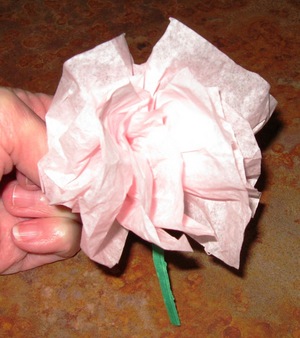Living in the state of Mississippi my whole life; I have become quite familiar with many plants. Some of these plants are called weeds by the locals. But each and every species of plant is considered a value in one way or the other whether it produces a heavenly smell or beautiful bloom. There are very many native plants to the area of New Albany, the town in which I live; but I will only dwell on a few.
A purple favorite it is, the wonderful Wisteria. Wisteria is a woody climbing vine that creeps by twining around any available support. Its favorite ‘prey’ is trellises and sides of buildings. It can actually climb very far heights. The flowers are either purple, violet, pink or white and blooms in the spring time. These flowers are produced in pendulum like clusters that hang in long bunches as grapes do. This plant is very hardy and fast growing. To some, this plant is considered invasive because it takes over anything it wraps around. Although it prefers fertile soil; it can grow just as well in poor conditions. Wisteria loves full sunlight or partial shade. As you see, Wisteria is a very strong plant and does not die easy.
The Honeysuckle is my personal favorite. Their vines are native to the Northern hemisphere and in Mississippi is a common plant which some feel is a pest. Like the Wisteria,Honeysuckle can take over very rapidly. In my home town, it is obvious when spring has arrived. The sweet smell of the honeysuckle wafts through the air and always catches me by surprise. When breaking the stem of the flower, a sweet nectar can be enjoyed. Honeysuckle is a wild and hardy plant which returns year after year. It is thought that the berries of the honeysuckle are poisonous to humans; but they are consumed by the larvae of some insects.
The Blue Iris is native to southern states. In many regions you will find the Iris but only certain species of the Iris can be found in certain places. The name Iris actually means ‘rainbow’ in Greek which means many colored. This plant is a perennial that is very hardy and can grow in varying conditions. It’s bloom is extremely beautiful with its long petals hanging over with large stamen in the center. It’s colors are very bright and some species have an amazing smell. Here in the south; the Iris must be grown in warm and dry conditions in the full sunlight. Their beauty is very rewarding to the gardener.
Shrubs and trees known as Dogwoods are herbaceous perennial plants. Some of these trees are actually evergreens. Locals in Mississippi are proud of the Christian legend behind the Dogwood tree. The legend proclaims that the cross used to crucify Jesus was made from wood of the Dogwood tree. When Christ returned; it is said he shrunk the tree and made the blooms to symbolize the cross, purity and the blood. These are only legends and the word Dogwood actually comes from the word Dagwood. ‘Dags’ meant strong sturdy wood used for constructing arrows or tool handles. Either way, the wood of this plant is extremely sturdy and has been used for many purposes. This tree grows in the wild and is thought of as a southern native.
Yarrow is a perennial which flowers during May and June. The plant has wide disk shaped flowers that are generally white in color. This flower is a very good addition to butterfly gardens and is also found growing wild in open grasslands or forests. Common Yarrow is a drought resistant species of which there are many kinds. This plant actually does better in poil developed soil that is very well drained. The plant is used as an astringent, diaphoretic, a tonic and a stimulant. It has a long history of being a healing herb. Also the stalk has been dried and used in I Ching divination. Another name for Yarrow is devil’s nettle.
There are many more plants native to my home town that I have pulled from the roots as flowers to give to my mother when I was a child. Maybe they were called weeds but they were plants all the same with different uses and hidden attributes that some never recognized. Don’t forget the rich history of some of these plants. When taking your next nature walk in the south; see if you can recognize any of these native plants of Mississippi; and remember these tidbits.

